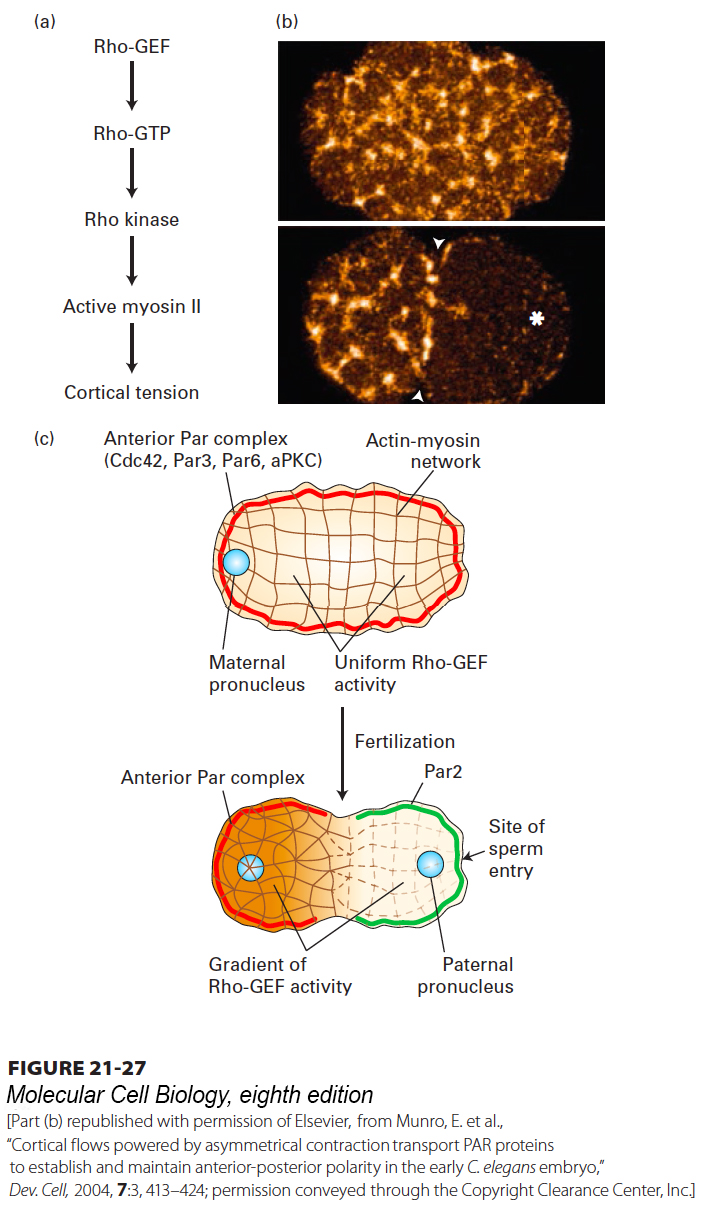
FIGURE 21- 27 Mechanism of segregation of the anterior Par complex in the one- cell worm embryo. (a) Before fertilization, the cell cortex is under tension due to the activity of Rho- GEF, the guanine nucleotide exchange factor for the small GTPase Rho. Rho·GTP activates Rho kinase, which phosphorylates the regulatory light chain of myosin II to activate it. Together with actin filaments, the active myosin II maintains tension in the cell cortex. (b) Localization of myosin II before (top) and after (bottom) fertilization. The asterisk marks the region of sperm entry. (c) Before fertilization, Rho- GEF is uniformly active, the cortex is under tension from active myosin II, and the anterior Par complex (Cdc42- Par3- Par6- aPKC) is uniformly distributed around the cortex. Upon fertilization, Rho- GEF becomes locally reduced, resulting in local deactivation of myosin II. This deactivation generates unequal tension, so the actin– myosin network contracts toward the future anterior end, moving the anterior Par complex with it. Once the anterior complex is localized, factors such as Par2 associate with the posterior cell cortex. See D. St. Johnston and J. Ahringer, 2010, Cell 141:757.
[Part (b) republished with permission of Elsevier, from Munro, E. et al., “Cortical flows powered by asymmetrical contraction transport PAR proteins to establish and maintain anterior- posterior polarity in the early C. elegans embryo,” Dev. Cell, 2004, 7:3, 413– 424; permission conveyed through the Copyright Clearance Center, Inc.]
[Leave] [Close]